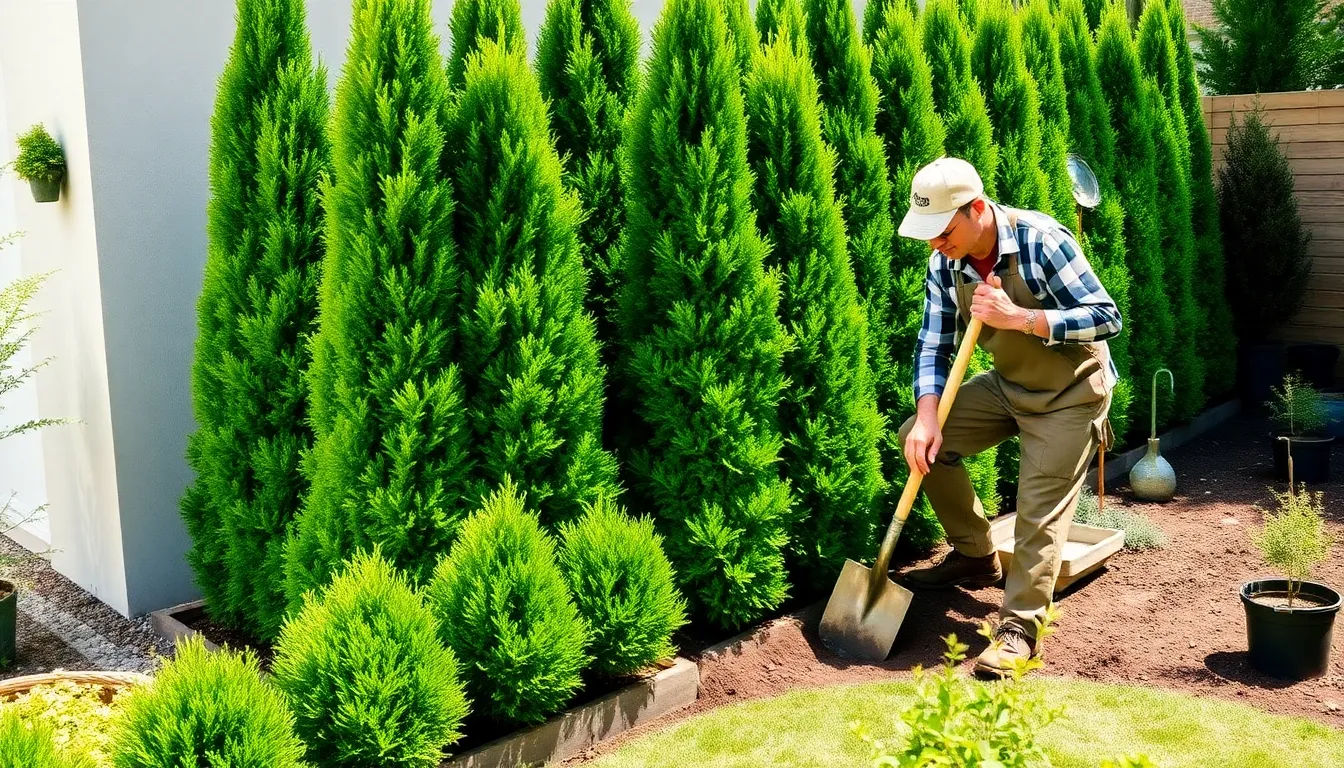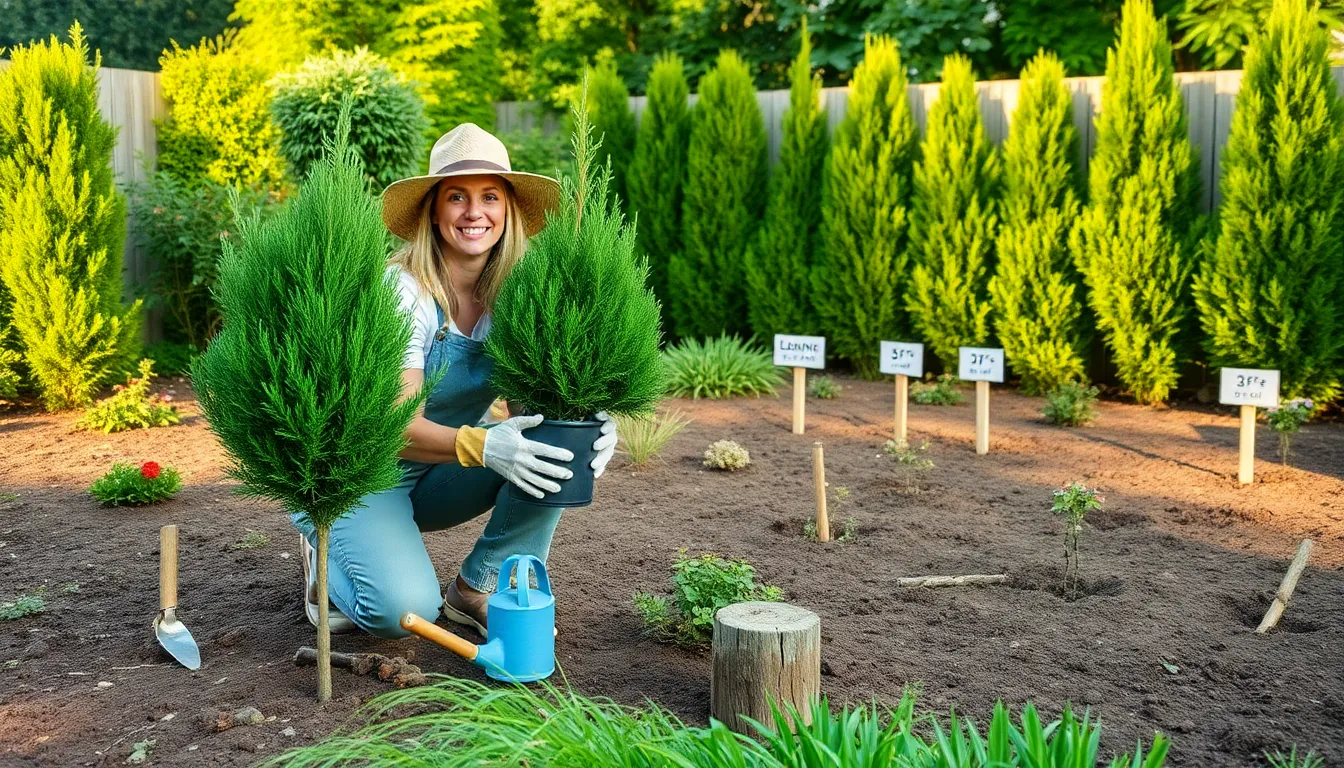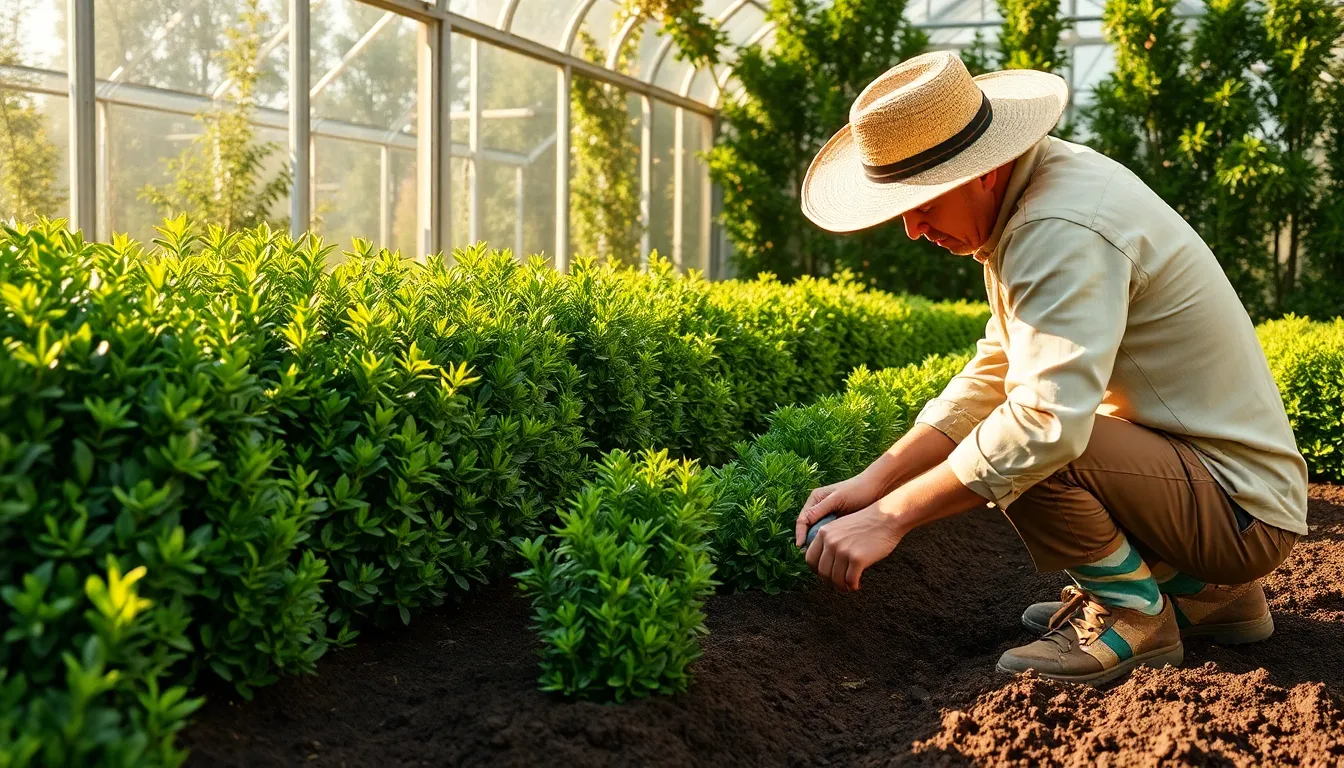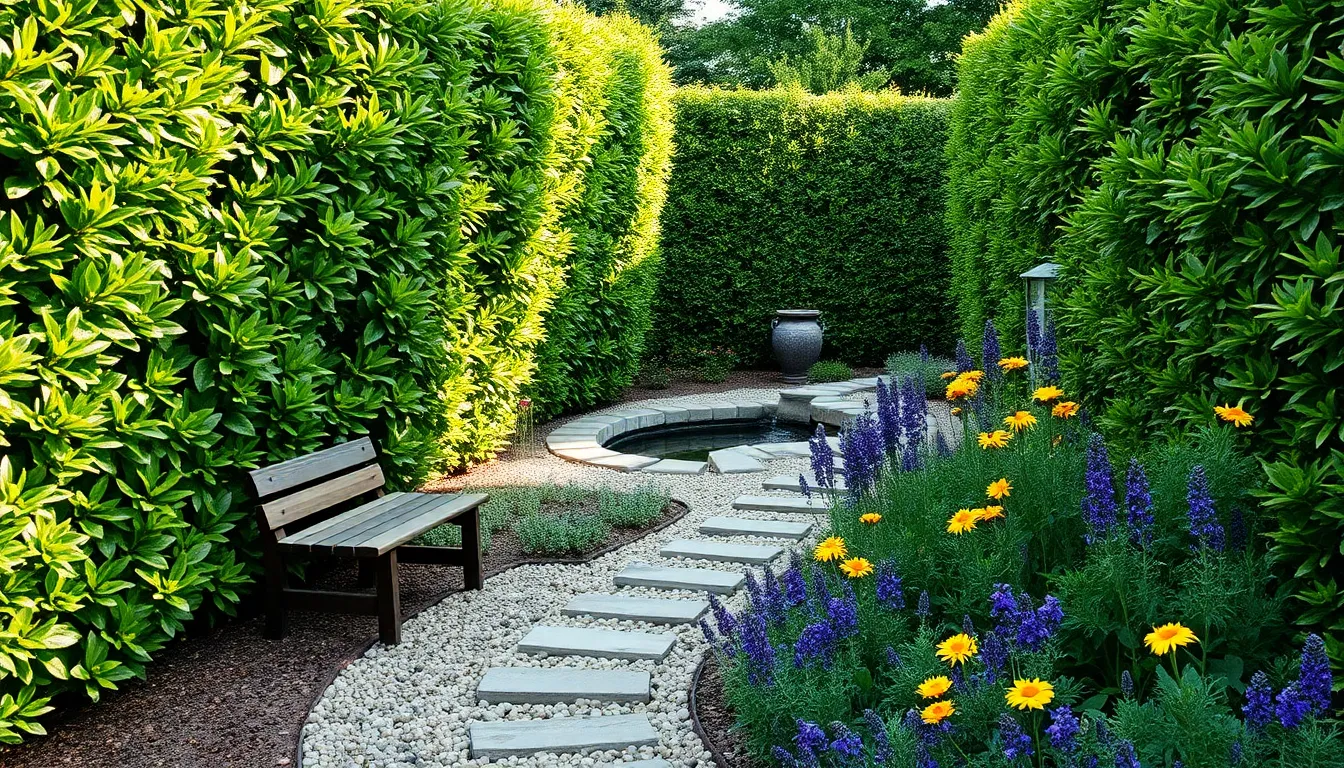Imagine transforming your backyard into a lush, green sanctuary where you can unwind in privacy and peace. Whether you’re a gardening novice eager to learn or a seasoned green thumb looking to refine your skills, “Expert Tips For Planting A Hedge For Privacy” is your passport to crafting the perfect natural barrier. This guide is your companion, offering insights and techniques to help you design a hedge that not only shields your space but also enhances its beauty.
With the right knowledge and approach, planting a hedge becomes an exciting endeavor, bringing joy and satisfaction with every new leaf. You’ll discover the secrets to selecting the ideal plants for your climate, ensuring that your hedge is a thriving, vibrant testament to your gardening prowess. By the end of this journey, you’ll feel empowered and confident, ready to turn your vision of a private green oasis into reality.
Choose Fast-Growing Hedge Varieties
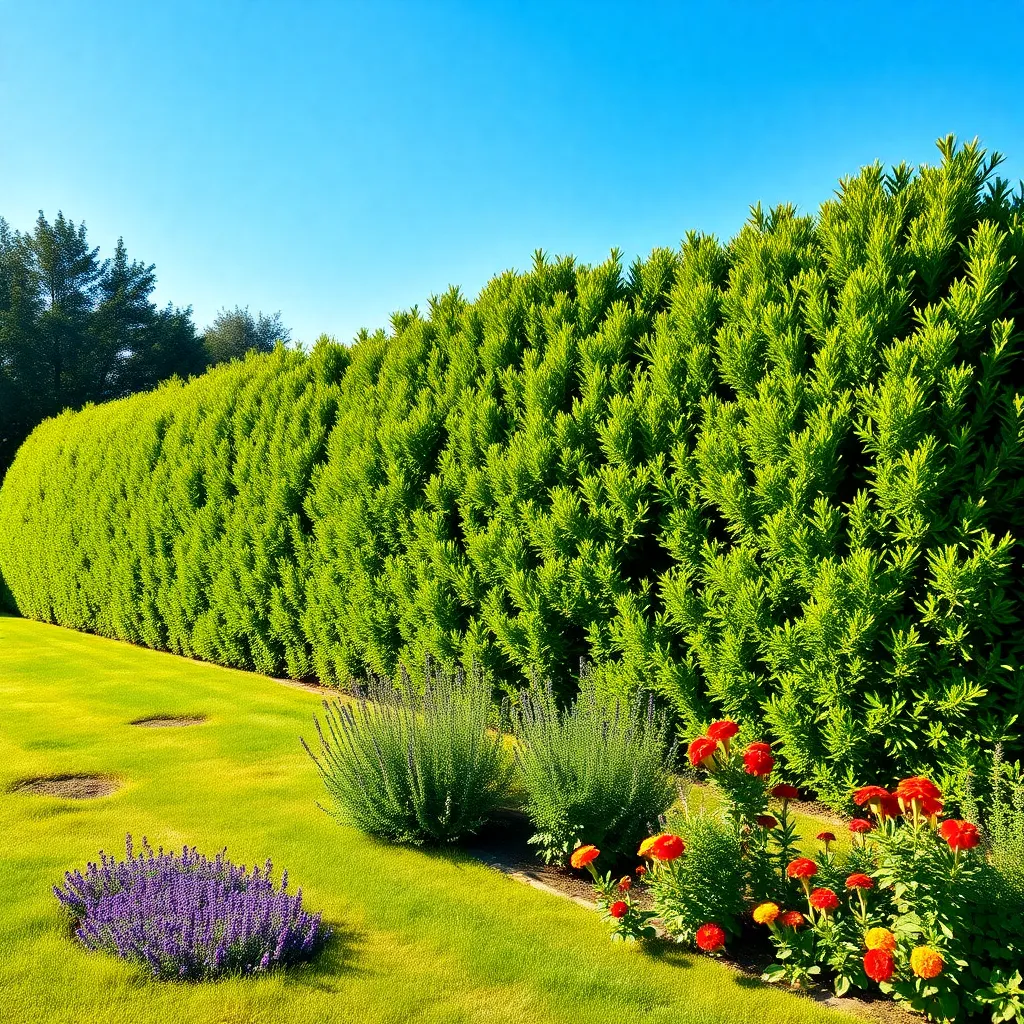
When choosing fast-growing hedge varieties, consider plants that thrive in your local climate and soil conditions. Common options include Leyland Cypress, Thuja Green Giant, and Privet, all known for their rapid growth and dense foliage.
These plants not only grow quickly but also require specific care to reach their full potential. Ensure they are planted in well-draining soil and receive adequate sunlight, as most fast-growing species thrive in full sun to partial shade.
Watering is crucial for young hedges to establish strong roots; aim to water deeply once a week, especially during dry spells. As they mature, these hedges will require less frequent watering, but mulching can help retain soil moisture and suppress weeds.
Advanced gardeners might consider using a balanced, slow-release fertilizer in spring to promote vigorous growth. Pruning is another essential task; regular trimming helps maintain shape and encourages dense growth, ensuring your hedge remains a strong privacy barrier throughout the year.
Space Plants for Dense Coverage
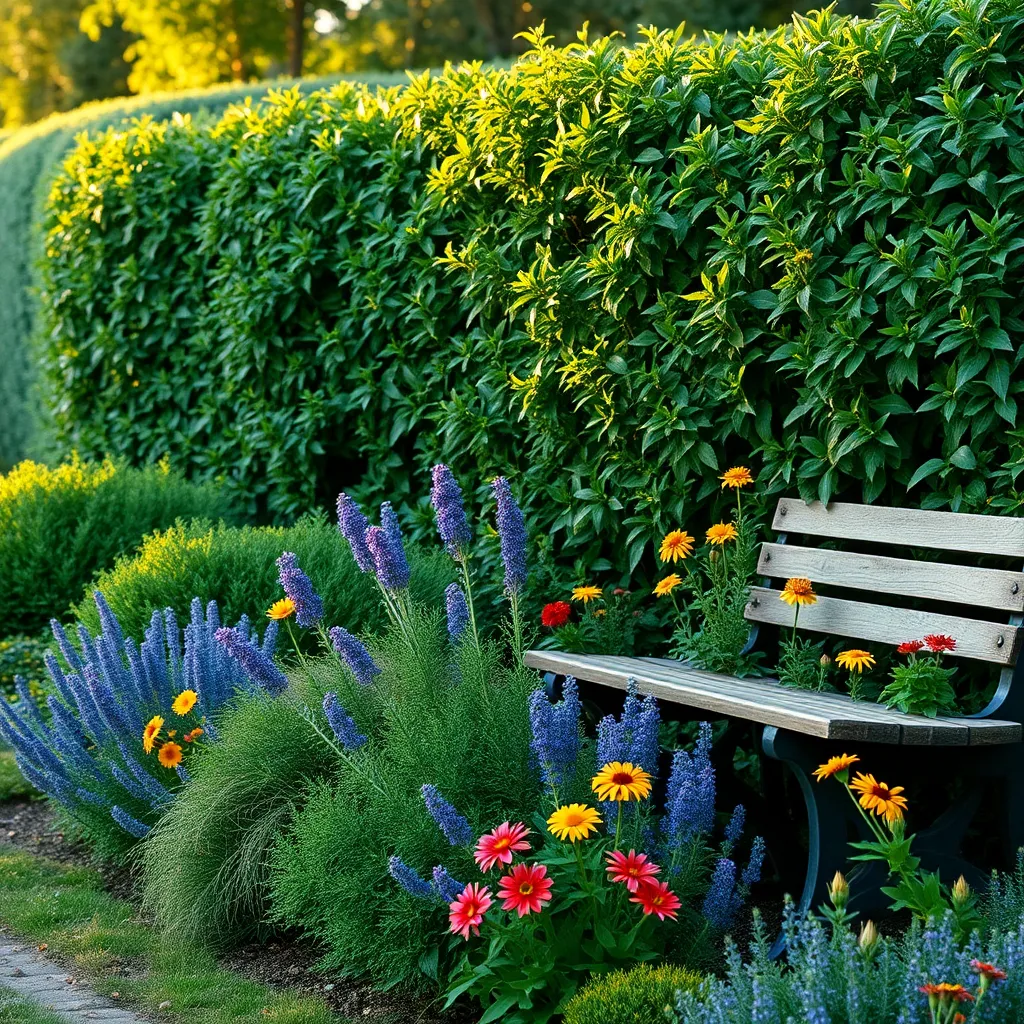
When planting for dense coverage, spacing is key to achieving a lush, impenetrable hedge. Begin by placing your plants at intervals recommended for the specific species, typically between 1 to 3 feet apart, ensuring they have room to grow while still creating a solid wall.
Consider the mature size of your chosen plants to avoid overcrowding, which can lead to poor air circulation and disease. Adjust spacing to accommodate the plant’s natural width, with closer spacing for slower-growing species and wider spacing for those that expand quickly.
For beginners, an easy technique is to use a measuring tape or yardstick to maintain consistent spacing as you plant. This not only ensures even coverage but also gives each plant the best chance to thrive without competition for resources.
Advanced gardeners can employ a staggered planting pattern, which involves planting in two offset rows, to increase density and visual appeal. This technique helps fill gaps sooner and offers more robust coverage, particularly useful if you’re aiming for a windbreak or sound barrier.
To further enhance dense growth, regularly prune your plants to encourage bushier development at the base. Frequent trimming not only shapes the hedge but also promotes healthier, more vigorous growth, resulting in a denser, more effective privacy screen.
Prune Regularly for Shape Control
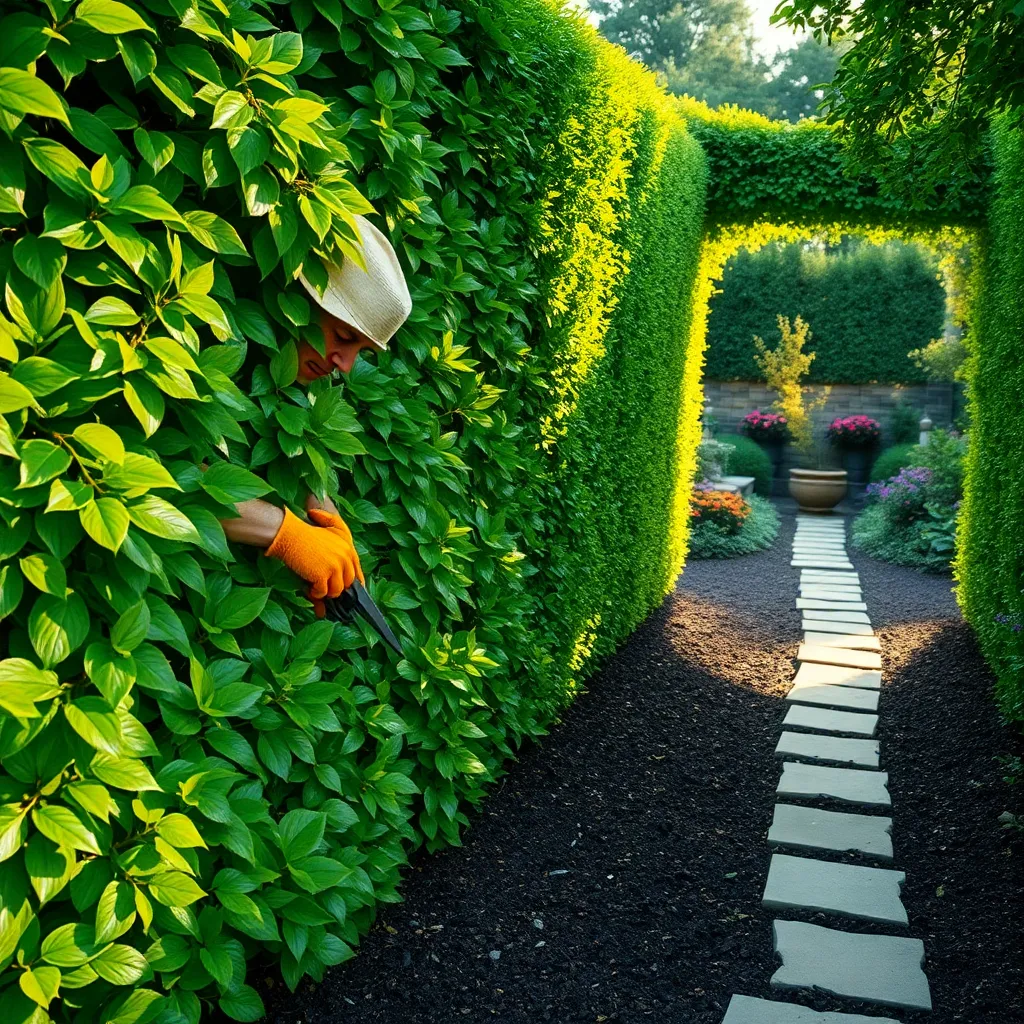
Pruning your hedge regularly is essential for maintaining its shape and promoting healthy growth. Begin by assessing the natural shape of your hedge and decide on the desired form you want to achieve.
Using sharp pruning shears, remove any dead or damaged branches to encourage new growth. Prune during the dormant season, typically late winter or early spring, to minimize stress on the plants.
For beginners, a simple rule is to trim about one-third of the new growth each season. This helps in maintaining a dense and uniform appearance, ensuring your hedge remains an effective privacy screen.
Experienced gardeners might consider advanced techniques like thinning cuts to improve air circulation within the hedge. This can prevent disease and promote a healthier, more robust plant structure.
Fertilize to Enhance Growth
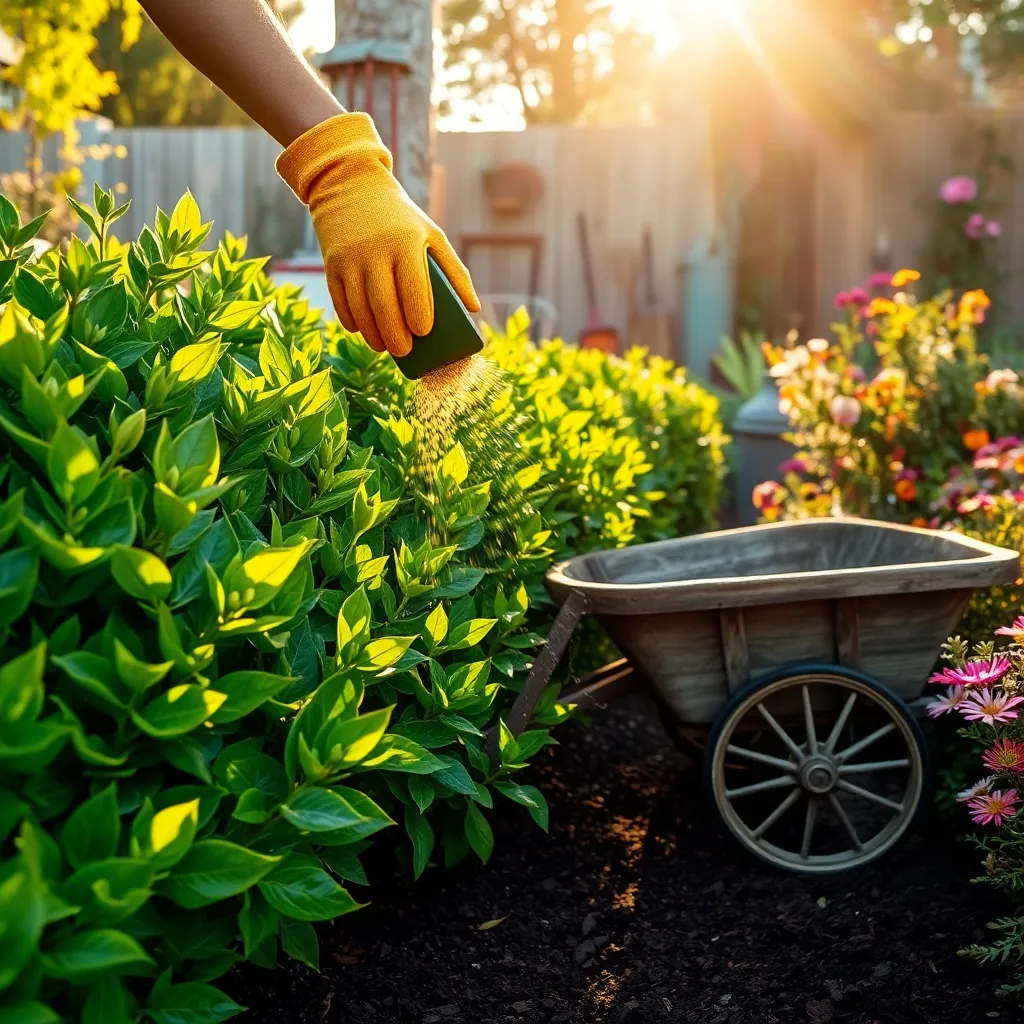
Fertilizing your hedge is crucial for promoting lush and vigorous growth. To start, choose a balanced fertilizer with equal parts nitrogen, phosphorus, and potassium, such as a 10-10-10 formula.
Apply the fertilizer in early spring, just as the growing season begins, to give your hedge a strong start. Use a granular fertilizer and spread it evenly under the drip line of the plants, avoiding direct contact with the stems.
Water the hedge thoroughly after fertilizing to help the nutrients reach the root zone where they are needed most. Consistent watering also ensures that the fertilizer dissolves properly, preventing any potential root burn.
For advanced gardeners looking to maximize hedge growth, consider using a slow-release fertilizer that provides nutrients over an extended period. This type of fertilizer minimizes the risk of over-fertilization and reduces the frequency of application.
- Tip for Beginners: Always read and follow the instructions on the fertilizer package to avoid over-application, which can harm your plants.
- Advanced Tip: Conduct a soil test to tailor your fertilization approach based on specific nutrient needs, ensuring optimal plant health.
Water Consistently for Healthier Hedges
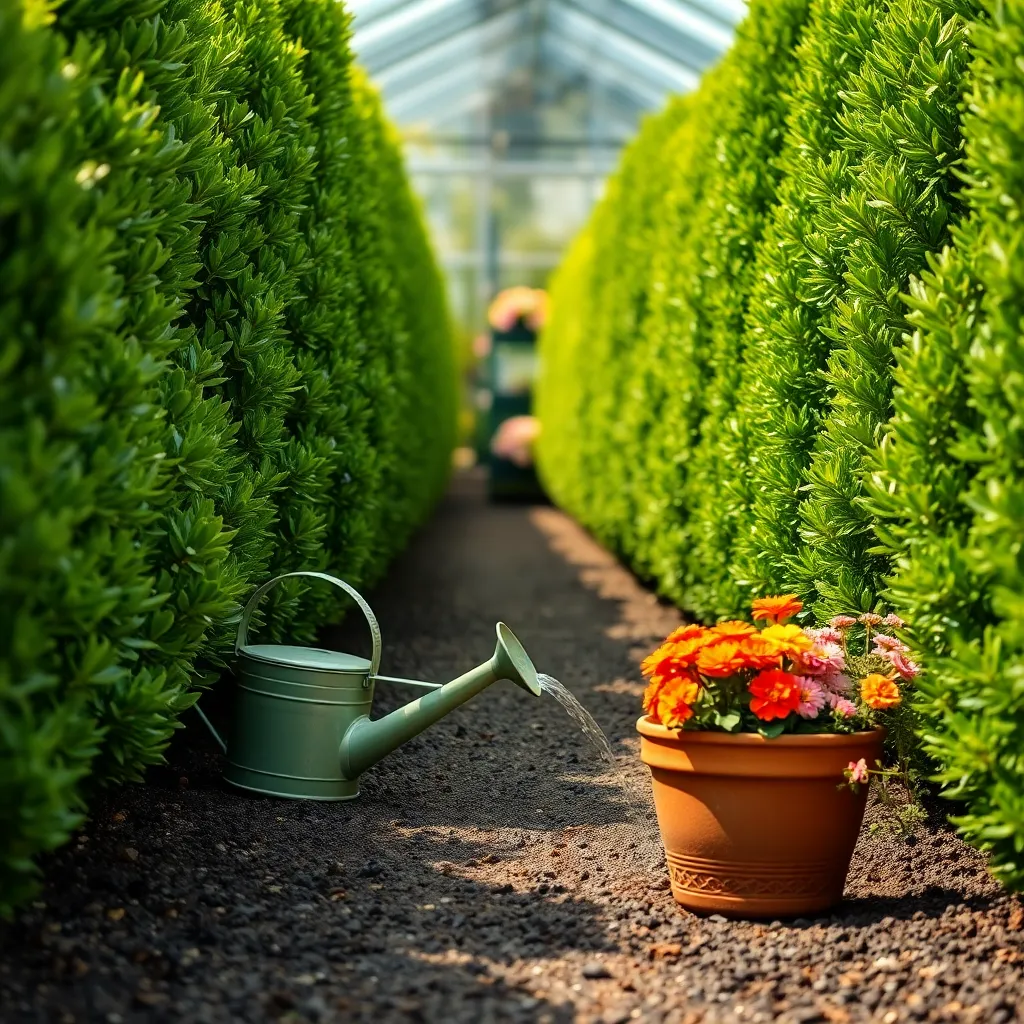
Ensuring consistent watering is crucial for the health and growth of your hedge. Regular watering helps establish deep roots, which is essential for the hedge’s long-term vitality.
During the first year, it’s important to water your hedges deeply once a week. This practice encourages the roots to grow deeper into the soil, making the plants more resilient to drought.
For established hedges, adjust watering frequency based on weather conditions. In hot or dry periods, increase watering to twice a week, while in cooler, wetter months, less frequent watering is sufficient.
Use a soaker hose or drip irrigation for efficient water delivery directly to the roots. These methods minimize water waste and ensure that the plants receive adequate moisture without the risk of fungal diseases caused by wet foliage.
Conclusion: Growing Success with These Plants
In wrapping up our exploration of planting a hedge for privacy, consider how these green walls parallel nurturing healthy relationships. First, we touched on the importance of understanding your environment, akin to knowing the foundation of your relationship. Next, selecting the right plants mirrors choosing the right elements to cultivate a thriving partnership. We then delved into planting techniques, which can be compared to effective communication strategies. Maintenance reflects the ongoing effort required to keep relationships healthy, while patience reminds us that the best results often take time.
As an actionable next step, consider assessing the ‘environment’ in your relationship today. What foundational aspects need more attention? Begin nurturing these areas with intention and care.
Remember, successful relationships, like flourishing hedges, require dedication and attention. Bookmark this article as a reminder and guide to revisiting these principles as your relationship evolves.
Looking ahead, envision the lush, strong hedge that represents the solid and nurturing relationship you are building. With each thoughtful action, you move closer to a future filled with love, security, and mutual growth. Save this article now, so you can revisit these insights whenever you need guidance on your journey.

